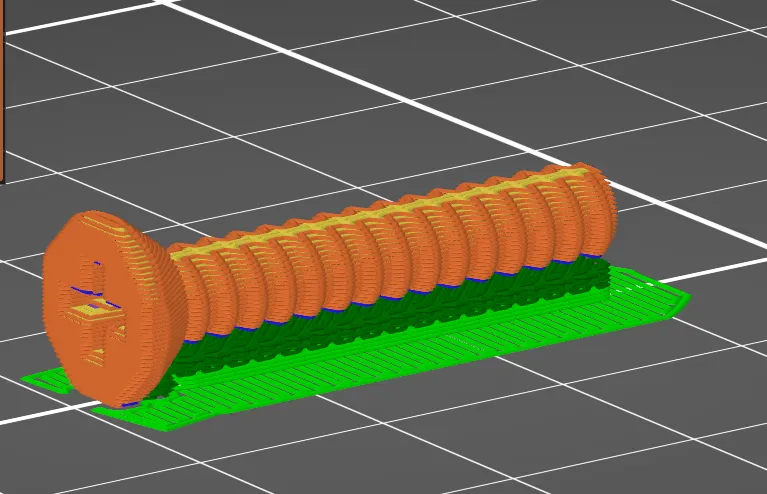If you wanna print it yourself, the model is here: https://www.printables.com/model/1348194-4n-threaded-flat-head-screws-and-nuts-10-32-equiva
Design to be a drop in replacement for 10-32 screws with a much, much higher pitch. These screws are extremely easy to print, is reliable enough that it can hold some weight.
If you wanna print this yourself, you need to make sure that the screw is sideways, so if it breaks it’s no on the layer lines.

Using them in my own prints which had metal screws and they are holding quiet well.
Have you considered a slotted head? They will scale better than a cross head, which works best with a machined fit.
Do different fills have different effects on the sturdiness? I would think that a solid fill is the best, but my kid insists different fills are more rigid.
Slotted is the way to go. I’ve messed with a lot of drive types on 3D printed screws and I always come back to slotted, because it’s the most resistant to being reamed out. Phillips, Torx, Roberson (square), and especially Allen (hex) really don’t work very well when printed in plastic.
Still testing the head designs. Should consider a slot instead since the hole doesn’t take well to a metal screw driver.
As for the fills. Wall thickness has more impact than infill due to it’s size. With that said, from my testing with stylus, 100% infill bends better than 25% which I am using. But as this is not suppose to be used crooked it shouldn’t make too much of a difference.
Printing like this is a fun start on the path of thinking about what is possible.
In FreeCAD, there is Mark’s Thread Design workbench. That includes a thread profile called the buttressed thread. The profile has a print orientation where, if you print it vertical, the thread will not produce any overhangs, like if a normal thread profile is
a buttress thread is7. Mark has a YT upload on how to use his workbench. It is pretty easy to follow and a simple one to use.At the stage I’m at in design, built in clips can replace most hardware. If I’m using printed threads it is usually a very large thread with some thin sleeve like clearance. I like to build splines into my threads to also create locking elements in the same space.
Torx or Robertson would probably be a better choice for head.




